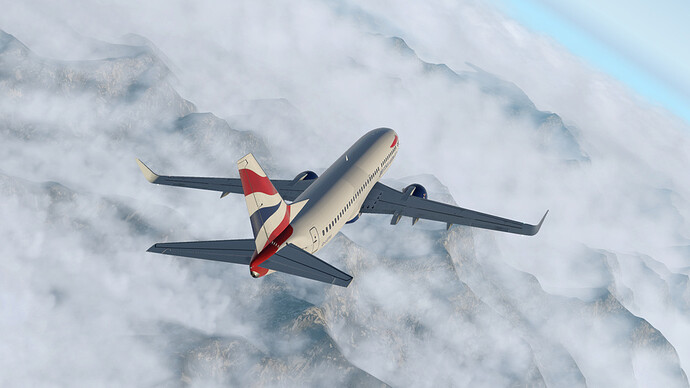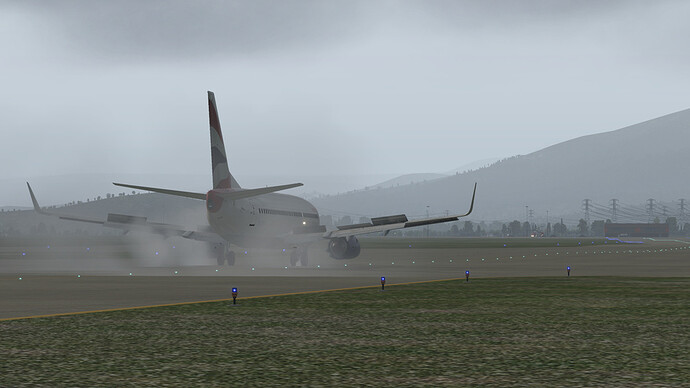Now for Leg 3: PANC (Anchorage) to UHPP (Petropavlovsk-Kamtchatski).
Time to cross the Pacific Ocean for 1700 nm until landing in Russia.
It’s a quiet, grey afternoon at Anchorage as I enter my flight plan in the FMC of my IXEG 737-300 Classic. I’ve grown quite fond of that plane during my trip from Boeing Field to Anchorage, so I think I’ll be a little better prepared this time. I plan a good 34000 lbs of fuel for the ride and I intend to climb to FL330.
The ascension is a bit foggy and visibility is a bit poor during the climb.
I follow the mesmerizing Alaska Range, which is covered mostly by clouds. Still, it’s quite a pretty sight.
I hardly notice crossing into the Pacific Ocean since it’s covered by a thick cloud layer. It seems like this white tapestry never ends. ![]()
I spot a small aircraft carrier near the ENM waypoint. The seas seem stormy down below.
The cruise is very uneventful, apart form a nasty crosswind that rattles the plane once in a while. Still, the autopilot keeps me on track. The Pacific Ocean is huge and this part of the flight is quite boring.
Eventually, I reach the shores of Kamchatka. Small mountains peak over the cloud layer.
I spot the Koryaksky volcano, towering over Avacha Bay.
Seeing all these mountains and this low cloud layer makes me uneasy. I still remember that crash in Alaska during my first attempt. I timidly begin my descent, making sure I clear any obstacle. However, I overfly the STAR approach since my descent was too timid and need to fly manually. At that point, I’d better be safe than sorry. I take a deep breath and carefully dive into the soup. At 2500 ft, I see the ground at last.
I get my bearings pretty rapidly and see the airport not too far away. Raindrops on my cockpit windows and a nasty crosswind up the stress levels a bit.
Through the fog, I spot the air strip at last.
I crab until I finally cross the runway threshold.
Almost there!
I come a little bit nose high but overall the landing is pretty smooth.
Aaand wheels down!
Runway 34 Right.
Water splashes away on the wet runway.
Look at these mountains, I bet they’re quite a sight in good weather!
Going to the parking area. I can breathe, now.
Ugh… I feel exhausted.
Full stop. I’m pretty glad I made it in one piece again. ![]()
It’s a bit unfortunate that out of my three landings, I had to land manually every time, which I think is good practice. This way, I make sure I don’t over-rely on the autopilot. It seems like by chance there was always something preventing me from using the ILS (bad descent, failing to capture glide slope or localizer, or just running out of gas seconds before hitting the runway).
Phew, now time to take a little break for beer-o’-clock (local time).





















